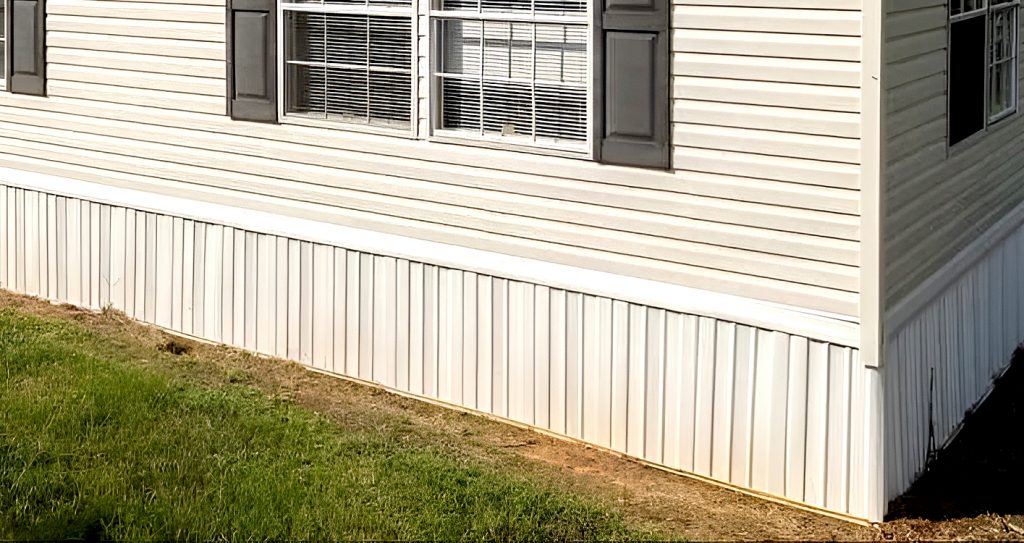

The cheapest way to skirt your mobile home is to use materials like plywood, vinyl, or even recycled items you may already have lying around. Each has pros and cons, but they do the job without costing a fortune. And let’s face it, anything is better than letting your home go commando! Stick around as we dive deep into these budget-friendly options. Ready to get started? Let’s go!
Let’s get to the meat of the matter: the cheapest skirting for your mobile home. Saving money doesn’t mean skimping on style or functionality. Let’s break it down.
First up is good ol’ plywood. Think of it as the basic white tee in your closet—simple, versatile, and oh-so-affordable. You can walk into any home improvement store and snag a 4×8-foot sheet for around 20 bucks or even less during sales. Yep, that’s what we call a bargain!
Pros
Now, why should you go for plywood? First off, it’s super easy to work with. Have you got a saw and some nails? You’re practically good to go. It’s a DIY dream come true. Secondly, you get to call the shots on the final look. You can paint it, stain it, or even stencil in some designs. Your home, your rules!
Cons
But wait, it’s not all sunshine and rainbows. Plywood has its Achilles’ heel: moisture. If you’re in a place that’s always wet, like Seattle, plywood might not be your best buddy. It can rot, buckle, and warp when constantly exposed to water.
There you have it—the lowdown on using plywood as your go-to mobile home skirting. It’s cheap, it’s easy, and it gives you the freedom to be as creative as you want. What’s not to love?
Suppose plywood is the basic white tee of skirting. In that case, vinyl is definitely the little black dress—stylish, low-maintenance, and a fit for almost any occasion. So, let’s dive into why vinyl might just answer your mobile home skirting prayers.
Pros
First up, let’s talk hassle-free living. Vinyl is like that friend who never asks for anything; it just chills and looks good. No painting, staining, or constant check-ups are required. Plus, you’ve got options. Seriously, vinyl comes in many styles and textures—do you want brick, wood grain, or a solid color? Vinyl’s got you covered. Price-wise, it’s a steal. You’re looking at around $1 per foot, and that’s money well spent for something so long-lasting and low-maintenance.
Cons
But hold on, let’s pump the brakes for a second. While vinyl is pretty awesome, it’s not perfect. In super cold weather, it can crack. Yep, it’s a bit like a drama queen that way, not loving the extreme temps. So, think twice if you’re in a place where winter is coming and it’s coming hard.
So, if you’re all about that easy life with a touch of style, vinyl is your guy. It’s like the Swiss Army knife of skirting—functional, good-looking, and won’t make you cry when you look at your bank statement. What’s not to like?
Lastly, let’s talk about recycled materials for mobile home skirting. Imagine turning someone else’s trash into your home’s treasure. Intrigued? Let’s get into it!
Pros
First, let’s talk dollars and cents, or the lack thereof. What is the beauty of recycled materials? You can often snag them for free or next to nothing. We’re talking old wood pallets, scrap metal, and even reclaimed barn wood if you want that farmhouse chic look. If you’re a treasure hunter, this is your golden ticket. And hey, you’re doing Mother Earth a favor by reusing materials. Win-win!
Cons
But wait, before you go dumpster diving, let’s get real for a second. Recycled materials can be a mixed bag. Durability can be hit or miss. And you might have to put in extra work to clean, paint, or seal your finds. Also, you’ll need to get creative to make it look cohesive unless you’re going for that avant-garde, mismatched look, which could be cool too!
So there you have it, folks! Whether it’s plywood, vinyl, or a dash of DIY ingenuity with recycled materials, you’ve got options that won’t have you emptying your piggy bank.